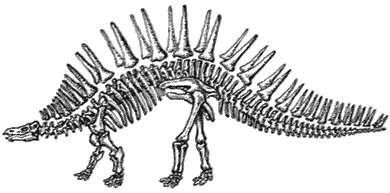
The Last of the Stegosaurs. Until recently the Indian Subcontinent was home to the last remaining stegosaurs. This suborder/superfamily of thyreophorans died out over the rest of the world in Early Cretaceous times. However, several species survived throughout the Paleogene period and Neogene period, on this isolated subcontinent, undisturbed by more advanced beasts. The climatic changes at the beginning of the Quaternary Glaciation ice age two million years ago in the Pleistocene killed them off.
Before the Quaternary Glaciation, stegosaurs still thrived in the Indian Subcontinent, in The New Dinosaurs: An Alternative Evolution.
During the Paleogene and Neogene a large triangular piece of ancient Gondwana (the Indian Subcontinent), over 3,000 kilometers (1,900 miles) long and 2,500 kilometers (1,550 miles) broad, moved northeastwards across the Tethys ocean and fused with the northern continent of Asia. It threw up the greatest mountain range on Earth, the Himalayas, along the join. The Gondwana animal life, such as the few remaining stegosaurs, continued on this new triangular peninsula with little change, isolated from the northern continent by the Himalayan mountain range.
